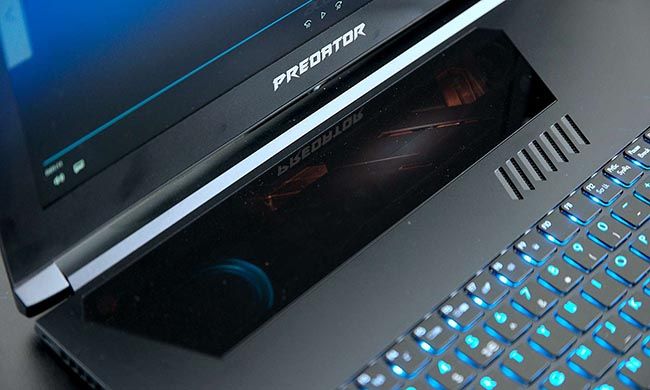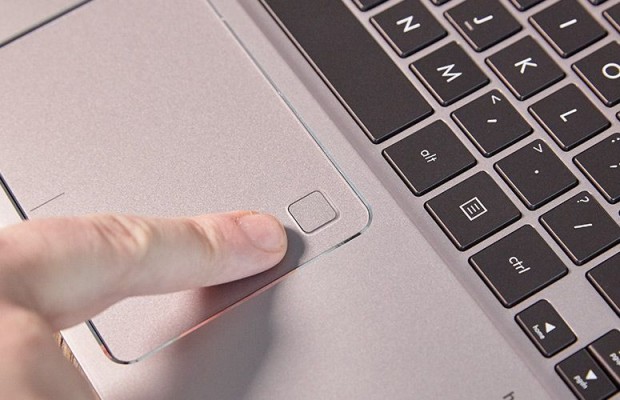Bad Touch: Stop Redesigning the Touchpad
At Acer’s annual showcase event last week, it debuted its Predator Triton 700, a superthin gaming laptop with a huge quirk: its touchpad is located above the keyboard. Not only that, it’s covered with Gorilla Glass, so you can’t even click it.
Unfortunately, Acer’s decision to drastically alter many people’s primary method of interacting with their laptops isn’t a one-off. It’s part of a disturbing industry-wide trend of companies ruining the look, location and function of their touchpads. Have they ever heard the maxim: "if it ain't broke, don't fix it"?
The Triton is first and foremost a gaming PC. Using a touchpad for gaming is a fool’s errand, so of course you’ll be buying a mouse from Razer or Logitech (or, Acer hopes, something Predator-branded). But what about when you want to hang out on the couch and mindlessly scroll Facebook? Hope you like using a mechanical keyboard as a wrist rest. Lenovo’s Legion Y520 took what should have been a simple, usable feature and screwed with it to make it look, quite literally, more edgy. The result? A trapezoidal surface that, in my review, I found to be maddening to use, as I constantly hit the edges of the pad.
And then there’s the Samsung Notebook Odyssey. Technically, the touchpad works as you would expect. Except for one thing: there’s a big rhombus pattern with red LED lights surrounding it. Everyone I’ve shown that laptop assumed that that surface had some sort of function. Maybe it was an extended but oddly shaped touchpad. No. Then the conversation goes like this:
“Are they buttons?”
“No. It does nothing. Just for show.”
“That’s stupid.”
MORE: Laptops with the Longest Battery Life
Other companies, including Acer and Asus, have recently started putting fingerprint readers in a corner of their touchpads. I’m all for fingerprint readers. Anything that lets me use Windows Hello (or, in the case of the Mac, Touch ID) to log in easily and securely is a win in my book. But putting the reader on the trackpad takes up space that can be used to navigate Windows 10 or a web browser. It’s easy to move your finger and skip over the reader, with the mouse screeching to a halt. Put it next to the trackpad. Put it above the keyboard. Put it anywhere else but on the touchpad, where it can get in the way when I don’t want to be using it.
Sign up to receive The Snapshot, a free special dispatch from Laptop Mag, in your inbox.
Of course, there has been some positive touchpad innovation in the last few years. While the reception to it has been mixed, I’m a fan of Apple’s unfortunately named Force Touch trackpads, which simulate the feel of clicking without actually moving. The fewer parts that can break, the better.
Real pros use external mice, as do gamers. But everyone, at some point, will use the touchpad. That's why we rate them in all of our reviews. If your users can’t easily and comfortably navigate around the desktop and software, you’ve done something wrong.
Photo Credit: Sam Rutherford, Jeremy Lips / Laptop Mag
Laptop Guide
- Laptop Buying Guide: 8 Essential Tips
- The Best & Worst Laptop Brands
- Laptop Tech Support Showdown: Undercover Report
- Should I Buy a Chromebook? Buying Guide and Advice
- Laptops with the Longest Battery Life
- Chromebooks vs. Windows 10 Laptops: What Should You Buy?
- Why You Shouldn't Buy a Touch-Screen Laptop
- Out of the Box Tips: Set Up Your New Laptop Like a Pro
- The Best Time to Buy a Laptop
- Chromebook vs. Tablet: Which Should You Buy?
- Laptop Buying Tips for Students
- 10 Key Features to Look for in Your Laptop
- How to Buy a 2-in-1 Laptop Hybrid
- USB Type-C FAQ: Everything You Need to Know
- How to Get Rid of Your Old Laptop
- Laptop Warranties: What They Cover
- Which CPU is Right For You?
- Which Laptop Features Are Worth the Money?
- Gaming Laptop Buying Guide: Find the Right Rig
- 10 Reasons Why Consumers Should Buy Business Laptops
- Which MacBook is Right for You?
- 5 Things to Look For in Your Next Laptop Keyboard
- How to Configure Your Laptop: Specs That Matter
- Which Graphics Card Do You Need?
- The Perfect Laptop? Here’s What It Should Have
- Why 78 Percent of Laptop Screens Suck
- A Guide to Computer Ports and Adapters
- 13 Ways to Make a Slow Laptop Faster
- How to Tell If You Can Upgrade Your Laptop
- Laptop Locks Guide: Do You Need One?
- 10 Features You Can Skip to Save Money
Andrew is a contributing writer at Laptop Mag. His main focus lies in helpful how-to guides and laptop reviews, including Asus, Microsoft Surface, Samsung Chromebook, and Dell. He has also dabbled in peripherals, including webcams and docking stations. His work has also appeared in Tom's Hardware, Tom's Guide, PCMag, Kotaku, and Complex. He fondly remembers his first computer: a Gateway that still lives in a spare room in his parents' home, albeit without an internet connection. When he’s not writing about tech, you can find him playing video games, checking social media and waiting for the next Marvel movie.


